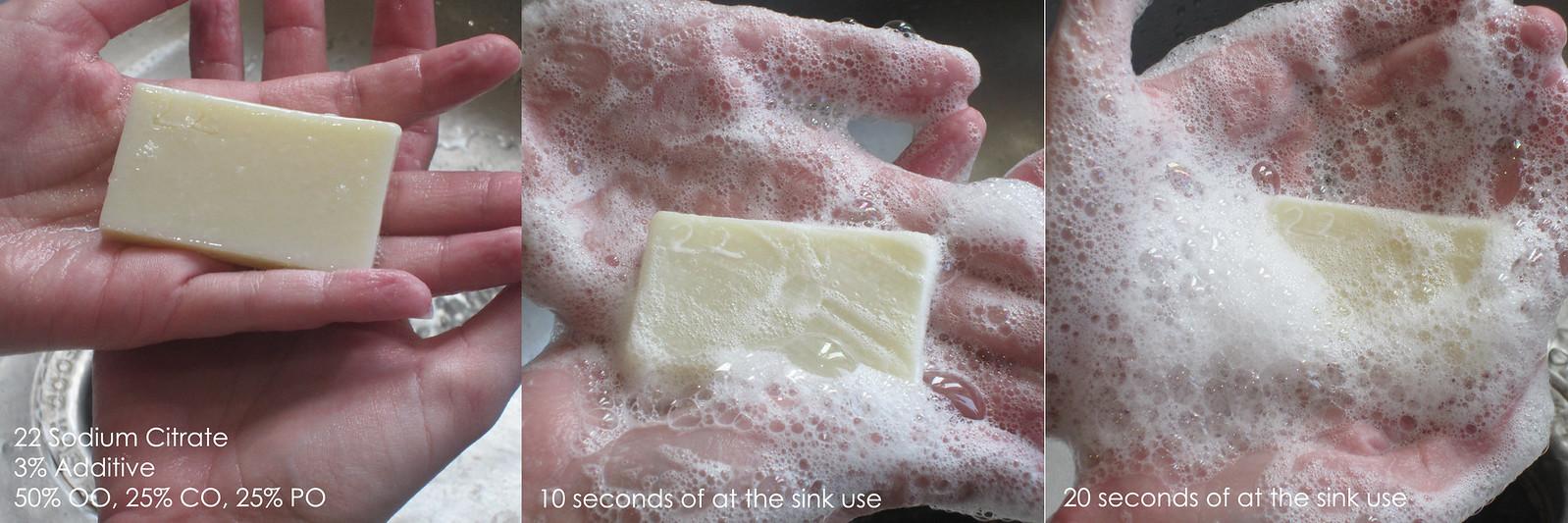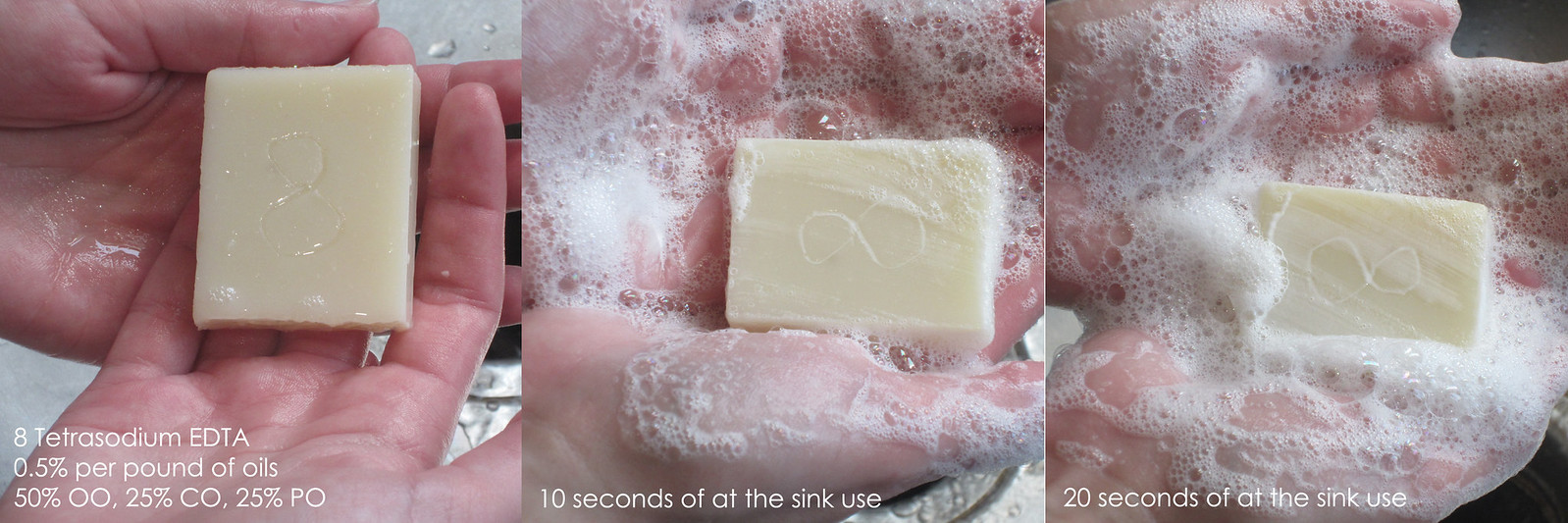I just got my Lotion Crafter order of Tetrasodium EDTA and I'd like to use it in my CP soap. I've scoured the forum threads and can't find the exact info I'm looking for so I apologize if this info has been covered and I missed it.
The Lotion Crafter site info on EDTA for use in soap says the range is 1.2-4%. I'm not sure how to decide what % to start with. Should I be thinking about the water I use to dissolve the lye (I always use distilled) or the water used to bathe? We don't have terribly hard water in my area but enough for me to notice a gradual increase in soap scum in the shower. So is there a "norm" that soapers use? I read a post by TOMH that said only a gram per 2lbs soap is needed. Also, when do I add the EDTA? Do I dissolve it in the water used for the lye? If so, before or after adding the lye? If not, where and when?
The site also talks about using EDTA in lotions to combat rancidity and act as a preservative. This range is 0.01-0.5% and it says to "add to the water phase". So does this mean I can replace Liquid Germall Plus in lotions with EDTA or can it be in addition to? The site doesn't mention anything about optimal tempertures so is it okay to add at any time? (Liquid Germall Plus is recommended at 122F or below).
TIA to all EDTA users!
The Lotion Crafter site info on EDTA for use in soap says the range is 1.2-4%. I'm not sure how to decide what % to start with. Should I be thinking about the water I use to dissolve the lye (I always use distilled) or the water used to bathe? We don't have terribly hard water in my area but enough for me to notice a gradual increase in soap scum in the shower. So is there a "norm" that soapers use? I read a post by TOMH that said only a gram per 2lbs soap is needed. Also, when do I add the EDTA? Do I dissolve it in the water used for the lye? If so, before or after adding the lye? If not, where and when?
The site also talks about using EDTA in lotions to combat rancidity and act as a preservative. This range is 0.01-0.5% and it says to "add to the water phase". So does this mean I can replace Liquid Germall Plus in lotions with EDTA or can it be in addition to? The site doesn't mention anything about optimal tempertures so is it okay to add at any time? (Liquid Germall Plus is recommended at 122F or below).
TIA to all EDTA users!








